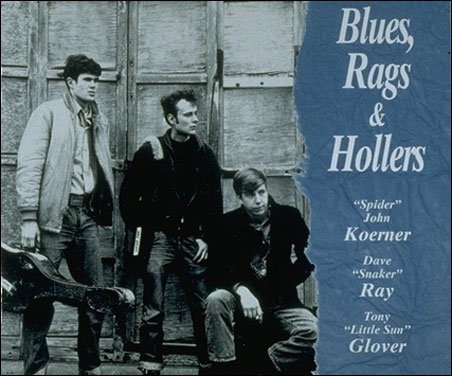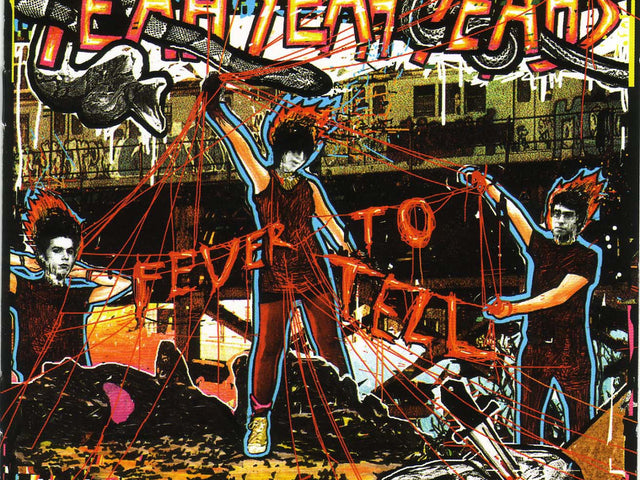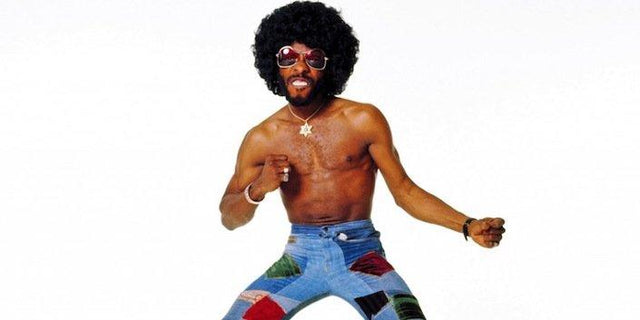Since we've already gone over 10 blues LPs for beginners, we're back with another 10 to get you even more into the genre, its history and how it connects to the present. This time around, we've got more legends and tragic tales, big-name influencers along with some guys who've never quite attained the same amount of fame as their peers. It's a mixed bag that also brings in elements of country, ragtime, folk, gospel, soul, rock and funk, with the common thread of some amazing singing and guitar.

Blind Lemon Jefferson: Black Snake Moan
The blind son of Texas sharecroppers, Jefferson took up the guitar in his teens and developed a fast-paced style of fingerpicking that would influence thousands, including Lead Belly, T-Bone Walker and Bob Dylan, who closed out his debut album with a cover of "See That My Grave Is Kept Clean." Called "The King of Country Blues," details on Jefferson's life and 1929 death are scarce, and his many recordings are appropriately scratchy, but you can still make out his revolutionary picking and the impressive range of his vocals.

Blind Willie McTell: The Early Years - 1927-1933
McTell, blind since childhood, favored the 12-string guitar, added a ragtime element to his blues and sang in a higher, warmer voice than many of his contemporaries. He recorded under a number of names, including Blind Sammie, Georgia Bill, Hot Shot Willie and Barrelhouse Sammy, and this compilation focuses on his early, more prolific years, including his 1928 recording "Statesboro Blues," later covered by the Allman Brothers. Other tributes to him include Bob Dylan's song "Blind Willie McTell" and some from the White Stripes, who dedicated De Stijl to him and covered "Southern Can Is Mine." Jack White's Third Man later collaborated with Document Records to release all of McTell's recordings on vinyl.

T-Bone Walker: Call It Stormy Monday
A follower of Blind Lemon Jefferson, whom he'd often help get around to gigs due to the elder man's lack of eyesight, the Dallas-based Walker inspired many of the greats. His subtle-yet-complex melodic guitar playing was a huge influence on B.B. King, and his onstage flair was a precursor to the antics of Chuck Berry and Jimi Hendrix, who copied Walker's tricks of playing behind his head or with his teeth. This compilation features most of his best recordings from the '40s and '50s, most notably the all-time great "Call It Stormy Monday."

Koerner, Ray & Glover: Blues, Rags and Hollers
Inspired by the likes of Lead Belly and Blind Lemon Jefferson, three young white guys from the University of Minnesota – "Spider" John Koerner and Dave "Snaker" Ray on guitar and vocals, and Tony "Little Sun" Glover on harmonica – decided to do their best imitation of the legends, covering songs and writing their own to put out this 1963 album. They weren't just good mimics – their originals sound every bit as legit as many recordings from the South, from the vocals and 12-string playing to the light foot tapping and Glover's harp wails. While Led Zeppelin is infamous for ripping off the blues legends, they undoubtedly also took some influences from this album. The version on vinyl now is a repressing of the Elektra reissue of the 1963 original, which was limited to 300 copies and featured several more tracks (you can hear those on CD or streaming services).

Son House: Father of Folk Blues
House's tale is one of the stranger ones in blues history, which is saying something. Growing up as a young Baptist preacher, didn't start playing guitar until he turned 25. He served a couple years for killing a man in self-defense, and later met up with fellow performer Charley Patton, who in turn helped get House into a studio for his first recordings in 1930 (also, check out Charley Patton, if you haven't already). In 1941, Alan Lomax recorded more of House's songs, but eventually the bluesman decided to retire. Unbeknownst to him, his fiery brand of blues and spirituals gained a following during the folk boom of the '50s and '60s, and he was "discovered" living up in Rochester, NY, not having played guitar in years in 1964. The next year, producer John Hammond tasked 22-year-old guitarist Alan Wilson, later a founder of Canned Heat, to help House re-learn his old songs, and they recorded a number of his old songs. Father of Folk Blues is culled from those sessions, focusing almost solely on his aging but no less powerful vocals and impeccable slide playing. The highlight is the a cappella "John the Revelator," adding a sense of menace to the old gospel standard.

Magic Sam: West Side Soul
As its title suggests, Magic Sam's 1967 debut is a perfect hybrid of Chicago blues and soul. Raised in the Delta before moving to the Windy City, Sam developed a raw, edgy style of singing and picking rarely heard on wax. As AllMusic's Stephen Thomas Erlewine put it, the album "doesn't sound like it was recorded in a studio, it sounds like the best night in a packed club." Sadly, Sam would only release one more proper album before dying of a heart attack at age 32 in 1969.

Jesse Ed Davis: Ululu
The Native American guitarist Davis has one of the most impressive resumes of any axeman out there. In the '60s and '70s, he recorded with John Lennon, George Harrison, Ringo Starr, Eric Clapton, Willie Nelson, Neil Diamond, Leonard Cohen, Rod Stewart and many, many more. He's best known for his work with Taj Mahal, playing lead, rhythm and slide guitar on the blues legend's first few albums. But he also released a handful of solo albums, including his sophomore effort, 1972's Ululu, which showcases his endearingly crude vocals over some supreme guitar work. Most of the record features originals, including the Mahal-aided "Farther on Down the Road (You Will Accompany Me)," as well as covers of Merle Haggard's "White Line Fever," George Harrison's "Sue Me, Sue You Blues" and the Band's "Strawberry Wine," assisted at times on piano by Dr. John and Leon Russell. It's a gem of a record from a career that was cut short by drugs and booze, with Davis passing at the age of 43 in 1988 of an overdose.

Rory Gallagher: Irish Tour '74
Another artist on this list who died too young, the Irishman deserves to be included in the conversation of best blues-rock guitarists of all time. This live album, a soundtrack to a movie of the same name, documents Gallagher at his best, performing in Belfast just days after massive bombings, and later Dublin and Cork. Every track has a few standout solos, in particular on the cover of Muddy Waters' "I Wonder Who" and the acoustic take on "As the Crow Flies." As a whole, it's an incredible display of brute blues force.

Albert Collins: Ice Pickin’
Albert Collins, aka "The Ice Man" and "The Master of the Telecaster," was a Texas bluesman famous for his weird guitar tunings and ferocious style of playing, pairing staccato picking with drawn-out notes. Ice Pickin' is Collins at his best, and with even one listen, it's apparent how much his virtuosity influenced fellow Texan Stevie Ray Vaughan. Album closer "Avalanche" is absolutely one of the most fun blues guitar instrumentals you'll experience.

Robert Cray: Strong Persuader
Though some of the '80s production sounds a bit dated now, Cray's crisp Stratocaster licks and smooth, sensual crooning, not to mention the backing by the Memphis Horns, are timeless. The 1986 LP won a Grammy for Best Contemporary Blues album and sold over two million copies thanks in part to its crossover appeal, with singles "Smoking Gun," "Right Next Door (Because of Me)" and "I Guess I Showed Her" straying away from the traditional confines of the genre to incorporate soul, funk, rock and R&B. And fun fact: Cray also appeared in Animal House as the bass player for Otis Day and the Knights.
Related Articles
Join the Club!
Join Now, Starting at $44Exclusive 15% Off for Teachers, Students, Military members, Healthcare professionals & First Responders - Get Verified!







